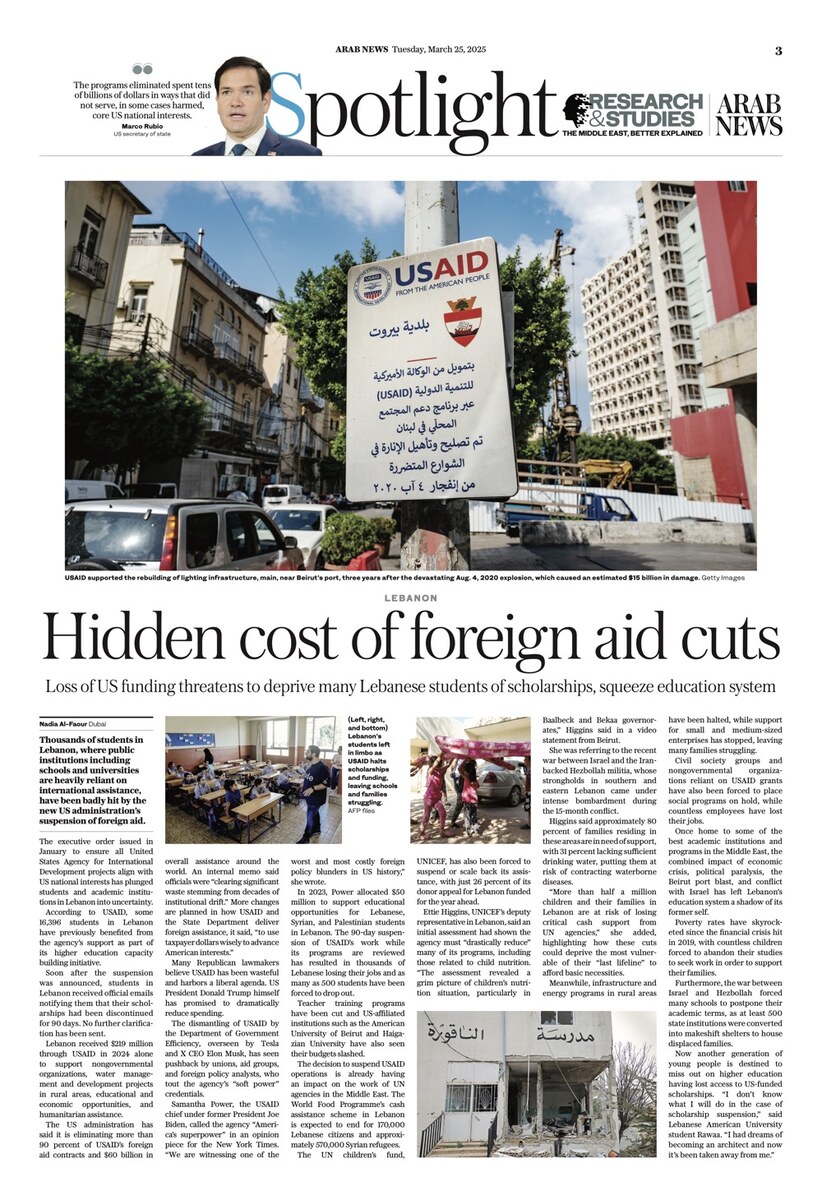DJEMMAL, Tunisia: Like many of his fellow Tunisians, 23-year-old Amine Elhani has never been to the cinema, but now, thanks to a mobile theater touring the country, he can finally enjoy the big screen.
The bright red truck of CinemaTdour, or “moving cinema,” has transformed parking lots and factory grounds in underserved towns and neighborhoods across the North African country into pop-up theaters.
In the central town of Djemmal, dozens of workers unloaded the expandable truck, easily setting up a fully equipped outdoor movie theater with 100 seats.
“The screen is huge, and the sound effects are amazing,” said Elhani, who had so far only watched films on his phone or computer.
He had “never had the chance to go to a movie theater,” he told AFP.
“It’s a fantastic experience, especially because I’m watching with friends.”
Movie theaters are scarce in Tunisia, numbering at just 15 and largely concentrated in major urban hubs.
Recognizing this gap, CinemaTdour was launched in May by private cultural network Agora and nonprofit Focus Gabes, with funding from private donors.
“We wanted a way to reach as many viewers as possible, in a short time and on a limited budget, while offering them an authentic cinematic experience,” project director Ghofrane Heraghi told AFP.
Mobile cinemas have long existed in other countries, but Heraghi said CinemaTdour was “unique” for turning a truck into a full-fledged theater.
Without government funding, CinemaTdour relies heavily on partnerships with private companies to cover costs like film rights, maintenance and staffing.
The truck itself was purchased on credit for about one million Tunisian dinars ($315,000), Heraghi said, with annual operating expenses of around 500,000 dinars.
For 10 days in Djemmal, residents could watch films for free thanks to a partnership with German car parts manufacturer Draxlmaier, which has a factory in the town.
Jihene Ben Amor, Draxlmaier’s communications manager in Tunisia, said the company wanted to “contribute to the development” of remote and underserved regions where it operates.
For many workers, earning up to 1,000 dinars a month, the cost of tickets and the journey to a main city with a movie theater can be prohibitive.
“Having this cinema right outside their workplace also gives workers a sense of pride and belonging,” said Ben Amor.
After Djemmal, CinemaTdour set up in Hay Hlel, an impoverished neighborhood of the capital Tunis.
Many children gathered around the pop-up theater, eager for their turn.
Yomna Warhani, 11, was beaming with excitement, anticipating her first ever movie screening.
“I can’t wait to see what it’s like inside and what films they’ll show,” she said.
Nejiba El Hadji, a 47-year-old mother of four, said: “It’s not just the kids who are thrilled, believe me.”
To her, the mobile cinema was a rare source of joy in an otherwise bleak environment.
“We have nothing here, no cultural centers and no entertainment, just the streets,” said Hadji.
“People say our kids are lost, but no one does anything about it.”
CinemaTdour’s two-week stay in Hay Hlel was funded by the World Health Organization, with screenings themed on mental health, smoking and drug abuse, and violence against women.
The shows were tailored for younger audiences as well as for viewers with hearing or visual impairments.
Heraghi, the project head, said that “what drives us is the social impact of culture.”
“We want to break stereotypes, shift mindsets, and promote values like social cohesion and community spirit.”
In just a few months, CinemaTdour has reached more than 15,000 people, including 7,500 in the southern oasis town of Nefta where a month of free screenings was sponsored by a date exporter.
The project now hopes to secure funding for additional trucks to expand its activities across the country.
But Heraghli has even bigger aspirations, she said, “taking it to Algeria, Libya, and maybe even across Africa.”



































